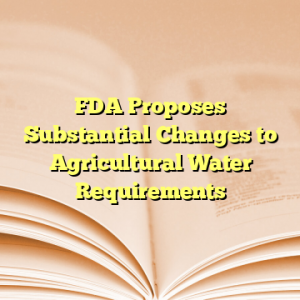
Since California passed AB 824: Preserving Access to Affordable Drugs in September 2019, the Association for Accessible Medicines (“AAM”) has been trying to invalidate the law, which imposes a presumption of anticompetitive effect on any Paragraph IV patent settlement in which the generic sponsor receives “anything of value,” including an exclusive marketing license or promise not to launch an authorized generic, from the patent holder. Intended to target “reverse payment” settlement agreements, in which a brand company pays a first-filer ANDA holder to delay launch, the California law shifts the burden of proof to the drug sponsors to demonstrate that any Paragraph IV settlement agreement is not an antitrust violation. In other words, the California law assumes that every potential Paragraph IV patent settlement is anticompetitive, and the pharmaceutical manufacturers must show that the settlement is not anticompetitive to avoid upwards of $20 million in fines. Unsurprisingly—and understandably given the evidentiary hurdle imposed, as well as the amount of proprietary information that must be disclosed for all Paragraph IV patent settlement agreements—industry was not happy.
Thus, as soon as AB 824 went into effect in January 2020, AAM sued California alleging that AB 824 violates the dormant Commerce Clause because it extends to entities and agreements that are not located in California. Ultimately though, the Eastern District of California denied AAM’s request for a preliminary injunction “primarily due to the nature of Plaintiff’s pre-enforcement attack on AB 824,” determining that AAM “failed to establish a likelihood of success on the merits or raise serious questions going to the merits.” The Court also determined that AAM failed to establish an irreparable harm that was both likely and imminent. AAM appealed, but the Ninth Circuit ultimately determined that AAM failed to demonstrate that its members had an Article III injury in fact and therefore lacked associational standing to bring claims on its members’ behalf. The case was dismissed without prejudice.
Litigation Take 2: AAM filed suit again in the Eastern District of California on August 25, 2020, once again seeking injunctive relief based on allegations that AB 824 is unconstitutional. AAM argued that AB 824 violates the dormant Commerce Clause by regulating out-of-state conduct; is preempted by federal patent law in view of FTC v. Actavis, 510 U.S. 138 (2013) and the BPCIA; violates the constitutional prohibition on excessive fines under the Eighth Amendment; and violates due process by burden-shifting with no meaningful opportunity to rebut the presumption applied. This time, in spite of California’s contention otherwise, AAM argued that it has standing because several members have suffered “concrete economic” harm from AB 824. Because an AAM member company submitting a Declaration stating that it “decided to pull out of a settlement negotiation for a pay-for-delay settlement agreement and chose instead to continue litigating a patent-infringement lawsuit at significant cost due to concerns about enforcement of AB 824,” the Court found the claim prudentially ripe and sufficient for purposes of standing.
With respect to the merits, the Court only addressed (here) the merits of the dormant Commerce Clause Claim because that argument alone was strong enough for the relief requested. AAM argued that AB 824 directly regulates out-of-state commerce because it is not limited to settlements entered in California or between California entities; conversely, California argued that AB 824 does not regulate conduct occurring wholly outside of California. The Court applied the “extraterritoriality theory” which precludes states from unduly burdening interstate commerce. Under that theory, any statute that directly controls commerce outside the boundaries of the state exceed the limits of that state’s authority. Recognizing that the Supreme Court rarely has held that statutes violate the extraterritoriality doctrine, the Court nevertheless explained that “AB 824 may reach the kind of settlement agreements . . . in which none of the parties, the agreement, or the pharmaceutical sales have any connection with California,” in violation of the doctrine.
California disagreed and told the Court that AB 824 applies only to agreements in California because manufacturers could omit California sales from any agreements subject to 824, but, said the Court, nothing in AB 824 limits the statute to only California settlements. Because, as written, AB 824 could apply to settlements in which none of the parties, the agreement, or pharmaceutical sales have any connection with California, the statute violates the dormant Commerce Clause. Further, AB 824’s civil penalties provision is violative, as it could levy substantially significant penalties on parties with no connection to California. Thus, AAM “is likely to succeed in showing that AB 824 violates the dormant Commerce Clause.”
Because AAM members will be unable to recover monetary damages against the state even if AAM is successful, the Court determined that the monetary injury here constitutes irreparable harm absent a preliminary injunction. And California could not demonstrate that the balance of equities tip in its favor due both the economic injury for pharmaceutical companies and the lost savings from slowed generic and biosimilar market entry. As AAM explained, AB 824 will lead—and has already led—to delays in availability of generic medicines and driven manufacturers to withdraw Paragraph IV ANDAs. This potential harm was not balanced by the need for California to have additional tools to address collusive agreements and its theory that the presumption ultimately will lower drug prices in California.
So AAM’s suit lives to see another day, and California is enjoined from enforcing AB 824. California has pledged to continue the fight. For now, California will have to continue to dream. And we imagine we’ll see you back in 2022 for California Dreaming Part 5.







